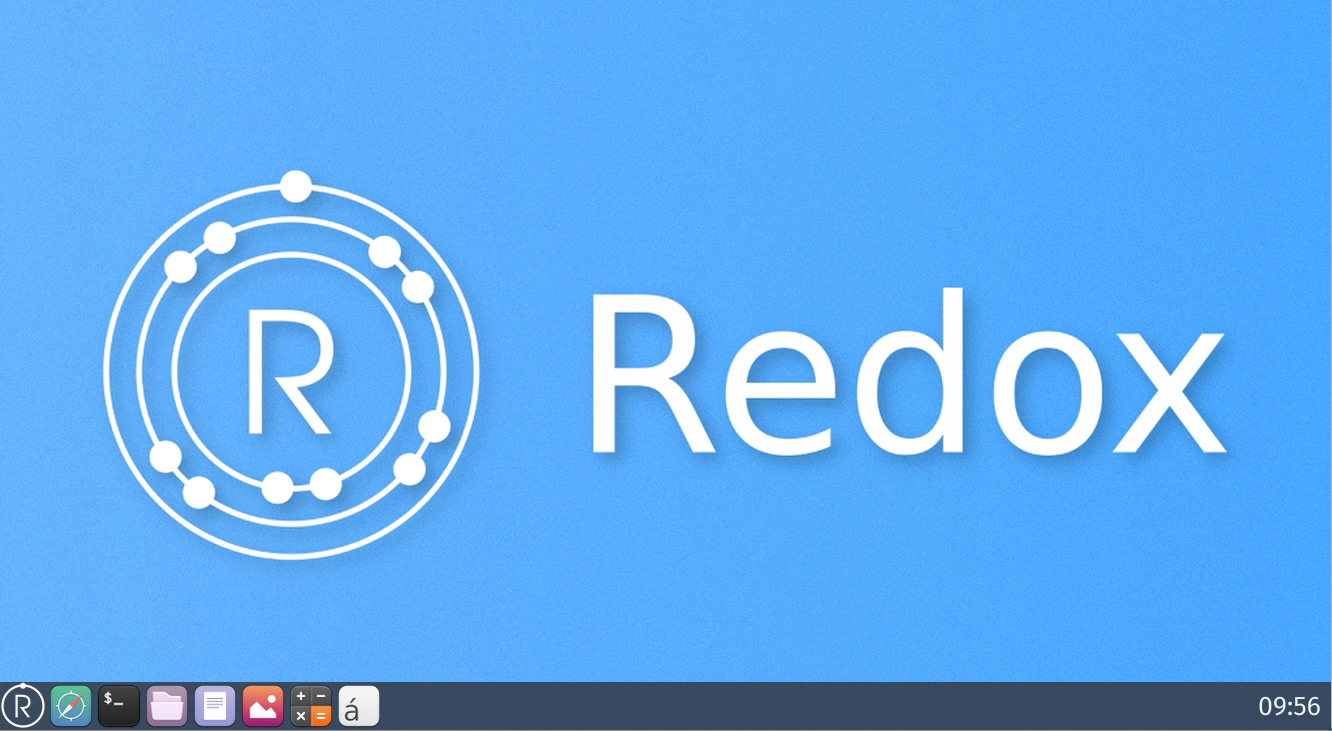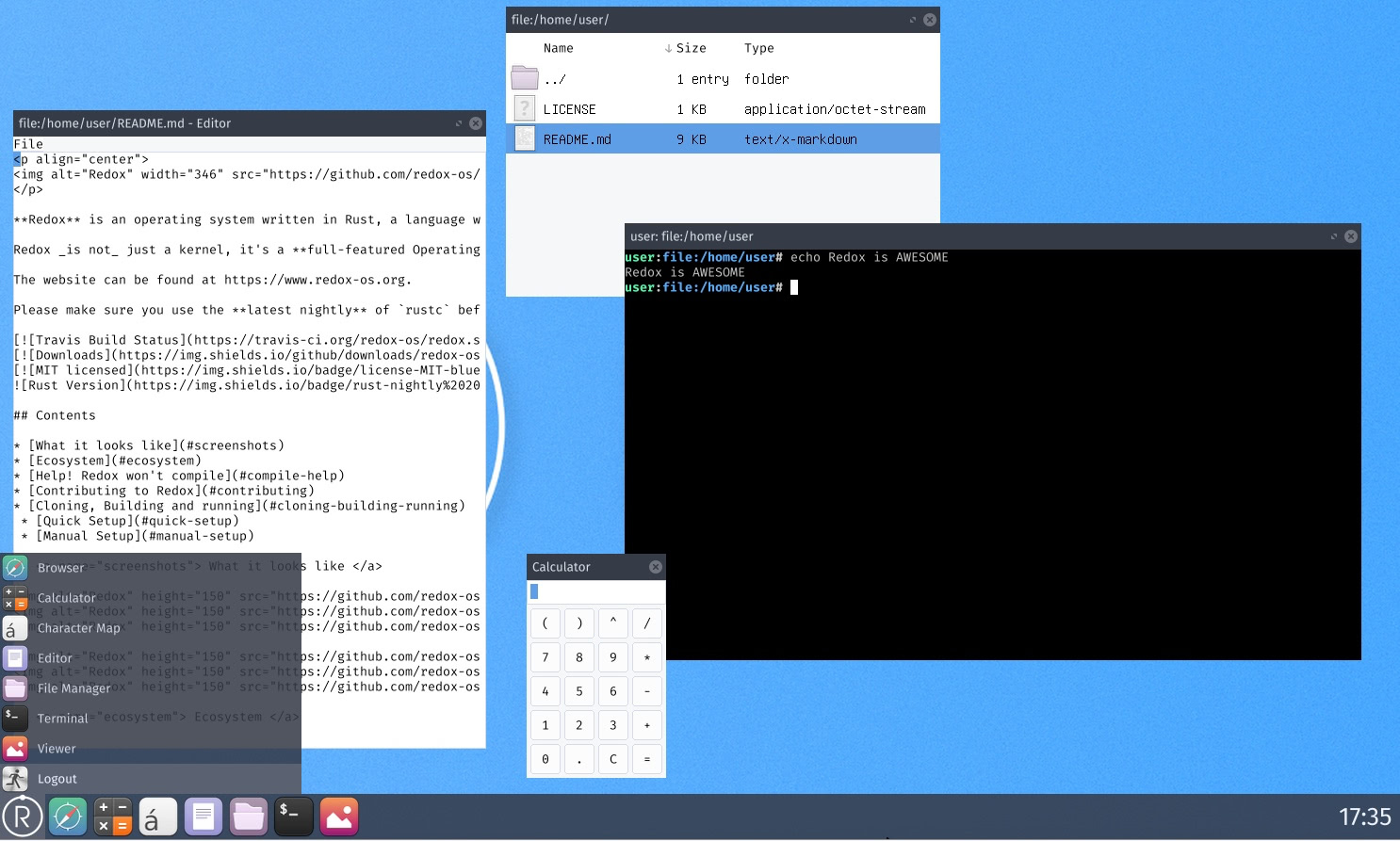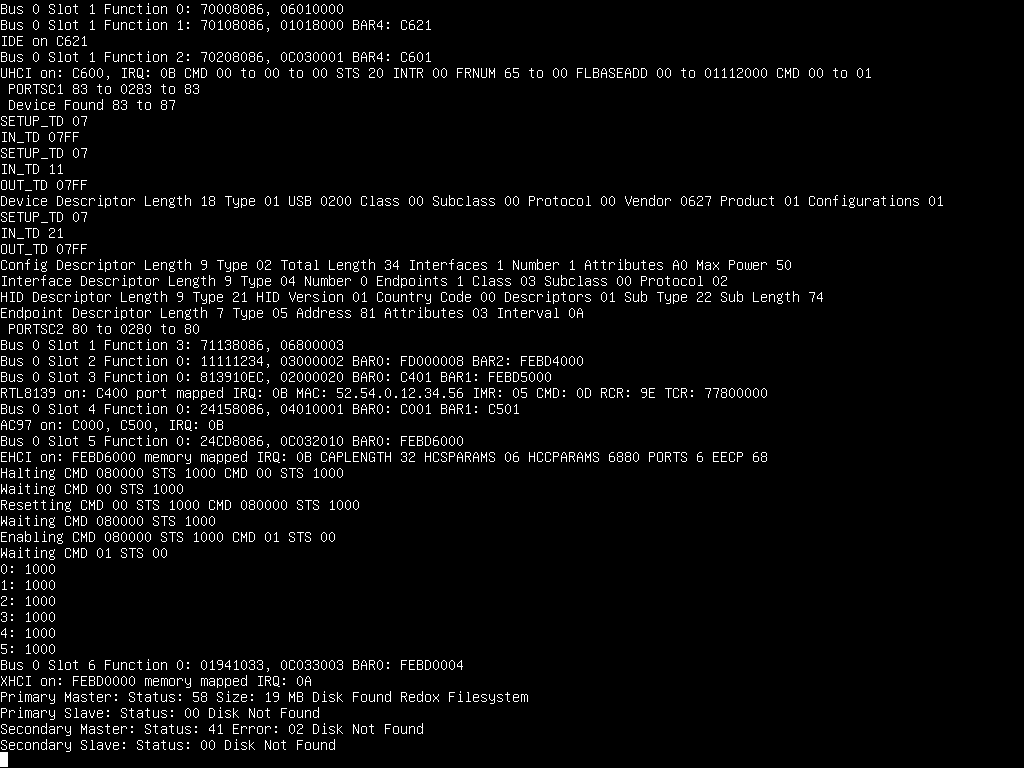Redox is an operating system written in Rust, a language with focus on safety and high performance. Redox, following the microkernel design, aims to be secure, usable, and free. Redox is inspired by previous kernels and operating systems, such as SeL4, MINIX, Plan 9, and BSD.
Redox is not just a kernel, it's a full-featured Operating System, providing packages (memory allocator, file system, display manager, core utilities, etc.) that together make up a functional and convenient operating system. You can loosely think of it as the GNU or BSD ecosystem, but in a memory safe language and with modern technology. See this list for overview of the ecosystem.
The website can be found at https://www.redox-os.org.
Please make sure you use the latest nightly of rustc before building (for more troubleshooting, see "Help! Redox won't compile!").
Contents
- What it looks like
- Ecosystem
- Help! Redox won't compile
- Contributing to Redox
- Cloning, Building and running
- Quick Setup
- Manual Setup
- Setup Using Docker
What it looks like



Ecosystem
The ecosystem and software Redox OS provides is listed below.
Help! Redox won't compile!
Sometimes things go wrong when compiling. Try the following before opening an issue:
- Run
rustup update - Run
make clean pull. - Make sure you have the latest version of Rust nightly! (rustup.rs is recommended for managing Rust versions. If you already have it, run
rustup). - Update GNU Make, NASM and QEMU/VirtualBox.
- Pull the upstream master branch (
git remote add upstream git@gitlab.redox-os.org:redox-os/redox.git; git pull upstream master). - Update submodules (
git submodule update --recursive --init).
and then rebuild!
Contributing to Redox
If you're interested in this project, and you'd like to help us out, here is a list of ways you can do just that.
Cloning, Building and Running
Redox is big, even compressed. Downloading the full history may take a lot of bandwidth, and can even be costly on some data plans. Clone at your own risk!
Quick Setup
$ cd path/to/your/projects/folder/
# Run bootstrap setup
$ curl -sf https://gitlab.redox-os.org/redox-os/redox/raw/master/bootstrap.sh -o bootstrap.sh && bash -e bootstrap.sh
# Change to project directory
$ cd redox
# Build Redox
$ make all
# Launch using QEMU
$ make qemu
# Launch using QEMU without using KVM (Kernel-based Virtual Machine). Try if QEMU gives an error.
$ make qemu kvm=noQEMU with KVM
To use QEMU with KVM (Kernel-based Virtual Machine), which is faster than without KVM, you need a CPU with Intel® Virtualization Technology (Intel® VT) or AMD Virtualization™ (AMD-V™) support. Most systems have this disabled by default, so you may need to reboot, go into the BIOS, and enable it.
Manual Setup
To manually clone, build and run Redox using a Unix-based host, run the following commands (with exceptions, be sure to read the comments):
$ cd path/to/your/projects/folder/
# HTTPS
$ git clone https://gitlab.redox-os.org/redox-os/redox.git --origin upstream --recursive
# SSH
$ git clone git@gitlab.redox-os.org:redox-os/redox.git --origin upstream --recursive
$ cd redox/
# Install/update dependencies
$ ./bootstrap.sh -d
# Install rustup.rs
$ curl https://sh.rustup.rs -sSf | sh
$ source $HOME/.cargo/env
# Install the sysroot manager Xargo
$ cargo install xargo
# For successive builds start here. If this is your first build, just continue
# Update git submodules
$ git submodule update --recursive --init
# Build Redox
$ make all
# Launch using QEMU
$ make qemu
# Launch using QEMU without using KVM (Kernel-based Virtual Machine). Try if QEMU gives an error.
$ make qemu kvm=no
# Launch using QEMU without using KVM (Kernel-based Virtual Machine) nor Graphics
make qemu kvm=no vga=noSetup using Docker
We also provide docker image. After cloning this repository, please follow README under the docker directory.
Updating the codebase using the Makefile
To update the codebase run:
make pull; make fetchmake pull pulls and updates the submodules, and make fetch updates the sources for cookbook recipes.



